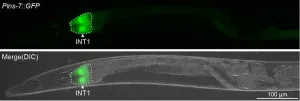(Press-News.org) Antarctica’s unique ecosystems could be threatened by the arrival of non-native marine species and marine pollution from Southern Hemisphere landmasses, new oceanographic modelling shows.
In a study published today in Global Change Biology, scientists from UNSW Sydney, ANU, University of Otago and the University of South Florida suggest that floating objects can reach Antarctic waters from more sources than previously thought.
“An increasing abundance of plastics and other human made debris in the oceans means there are potentially more opportunities for biota to reach Antarctica,” says lead author Dr Hannah Dawson, who completed the study as part of her PhD at UNSW, and is now based at the University of Tasmania.
Non-native species – including a range of small marine invertebrates – can reach Antarctica by catching a ride on floating objects like kelp, driftwood, pumice, and plastic. Previously, scientists thought these species only drifted from remote and unpopulated islands in the Southern Ocean. However, this new research suggests they can reach the Antarctic coastline from all southern continents.
“We knew that kelp could raft to Antarctica from sub-Antarctic islands, such as Macquarie and Kerguelen Islands, but our study suggests that floating objects can reach Antarctica from much further north, including South America, New Zealand, Australia, and South Africa,” says Dr Dawson.
Co-author Professor Crid Fraser from the University of Otago says that kelp could deal a potential double whammy blow to Antarctica’s marine ecosystem.
“Southern bull kelp and giant kelp are very big – often more than 10 m long – and create forest-like habitat for a lot of small animals, which they can carry with them on the long rafting trips to Antarctica,” she says.
“If they colonise Antarctica, marine ecosystems there could change dramatically.”
Southern Ocean modelling
Using modelled surface current and wave data from 1997 to 2015, the team tracked the movement of floating debris from various Southern Hemisphere land sources toward Antarctica, providing valuable new insight into the frequency and pathways of marine dispersal.
“We were able to analyse how frequent these rafting connections are by simulating dispersal pathways across 19 years of differing oceanographic conditions,” ANU co-author Dr Adele Morrison says.
“We found that rafting objects reached the Antarctic coastline in each of the years simulated. There seems to be a constant bombardment of anything that floats – whether it’s kelp or a plastic bottle.”
Dr Dawson likens the computer modelling process to the game ‘Poohsticks’ from the children’s classic Winnie the Pooh.
“Imagine dropping a stick into a river and then running downstream to see where it ends up – that’s essentially what we do with our modelling, using simulated ocean currents, instead of a river.”
“We released millions of virtual particles – representing drift objects – from each of the source land masses and modelled their trajectories across 19 years of estimated surface ocean currents and surface waves. After running the simulations, we were able to see where they would likely end up.
“The shortest time it took for particles to reach the Antarctic coastline was from Macquarie Island, south of New Zealand, some of which arrived in just under 9 months. On average, the longest journey was for objects released from South America,” she says.
Warmer waters
The research also sheds light on which regions of the Antarctic coastline are most at risk to non-native species arrivals.
“Most of these rafting objects arrive at the tip of the Antarctic Peninsula, a region with relatively warm ocean temperatures and often ice-free conditions. These factors make it a likely area for non-native species to first establish,” says UNSW Scientia Professor Matthew England, who is also a co-author.
The dramatic drop in Antarctic sea ice over the last couple of years makes these rafting connections particularly concerning.
“Sea ice is very abrasive and so acts as a barrier for many non-native species to successfully establish around Antarctica,” Dr Dawson says.
“If the recent decline in Antarctic sea ice continues, then living things floating at the surface, or attached to floating objects, could have an easier time colonising the continent, which may have big impacts on ecosystems.”
END
Antarctica vulnerable to invasive species hitching rides on plastic and organic debris
2024-08-22
ELSE PRESS RELEASES FROM THIS DATE:
Legal challenges in human brain organoid research and its applications
2024-08-22
A recent study has explored the legal and ethical challenges expected to arise in human brain organoid research.
Human brain organoids are three-dimensional neural tissues derived from stem cells that can mimic some aspects of the human brain. Their use holds incredible promise for medical advancements, but this also raises complex ethical and legal questions that need careful consideration.
Seeking to examine the various legal challenges that might arise in the context of human brain organoid research and its applications, the team of researchers, which included a legal scholar, identified and ...
The changes to cell DNA that could revolutionise disease prevention
2024-08-22
University of Queensland researchers have discovered a mechanism in DNA that regulates how disease-causing mutations are inherited.
Dr Anne Hahn and Associate Professor Steven Zuryn from UQ’s Queensland Brain Institute said the findings could provide a promising therapeutic avenue to stop the onset of heritable and age-related diseases.
“Mitochondrial DNA is essential for cell function,” Dr Hahn said.
“But as we age it mutates, contributing to diseases ...
Gut molecule slows fat burning during fasting
2024-08-22
LA JOLLA, CA—In a struggle that probably sounds familiar to dieters everywhere, the less a Caenorhabditis elegans (C. elegans) worm eats, the more slowly it loses fat. Now, scientists at Scripps Research have discovered why: a small molecule produced by the worms’ intestines during fasting travels to the brain to block a fat-burning signal during this time.
Although the exact molecule they identified in the worms has not yet been studied in humans, the new work helps scientists better ...
The Lancet Public Health: Climate change and ageing populations to drive greater disparities in deaths from hot and cold temperatures across Europe, modelling study suggests
2024-08-22
Modelling study using data on 854 European cities is the first to estimate current and future deaths from hot and cold temperatures at this level of regional detail for the entire continent.
Study suggests existing regional disparities in death risk from hot and cold temperatures among adults will widen in the future due to climate change and ageing populations.
A slight decline in cold-related deaths is projected by 2100, while deaths from heat will increase in all parts of Europe, most significantly in southern regions. Areas worst affected will include Spain, Italy, Greece and parts of France.
Currently, around eight times ...
Suicide rates among doctors have declined, but female doctors still at high risk
2024-08-22
Suicide rates among doctors have declined over time, but are still significantly higher for female doctors compared with the general population, finds an analysis of evidence from 20 countries published by The BMJ today.
The researchers acknowledge that physician suicide risk varies across different countries and regions, but say the results highlight the ongoing need for continued research and prevention efforts, particularly among female physicians.
According to some estimates, one doctor dies by suicide every day in the US, and ...
New study provides further support for psilocybin’s potential to treat depressive symptoms
2024-08-22
High doses of psilocybin - the active ingredient in magic mushrooms - appears to have a similar effect on depressive symptoms as the selective serotonin reuptake inhibitor (SSRI) drug escitalopram, suggests a systematic review and meta-analysis published in The BMJ today.
The findings show that patients treated with high dose psilocybin showed better responses than those treated with placebo in antidepressant trials, although the effect size was small.
The researchers point out that flaws in study designs may have overestimated the effectiveness ...
Calls for cold water swimming to be made safer for women
2024-08-22
Cold water swimming is growing in popularity amongst women, but more support is needed to make many wild swimming sites in the UK safer and more accessible, finds a new study led by UCL researchers.
The research, published in Women’s Health, explored the habits of women who enjoy cold water swimming and was carried out in collaboration with researchers from the University of Portsmouth, University of Sussex, University Hospitals Sussex NHS Foundation Trust, University of Plymouth and Bournemouth University.
The team surveyed 1,114 women in the UK aged 16 to 80 years ...
Wounds are common among people who use illicit opioids, but proper wound care is hard to find
2024-08-22
The animal tranquilizer xylazine is increasingly found in the illicit opioid supply nationwide, leading to severe wounds among people who use drugs. New research led by a University of Pittsburgh physician-scientist and published in Drug and Alcohol Dependence seeks to understand wound care experiences of this population.
A cross-sectional survey of people who use drugs identified through three syringe service providers in Massachusetts found the vast majority had experienced xylazine wounds in the prior year. As the need for comprehensive, low barrier wound care grows, access to such care continues to lag behind the demand. As a result, these wounds often lead to serious ...
Even as COVID raged, spikes in homicide were a significant drag on life expectancy for Black men
2024-08-22
MADISON — While the COVID-19 pandemic quickly reversed decades of progress in closing the gap between life expectancies for Black and white people in the United States, the disease’s toll may have obscured the impact of another significant public health concern — a sharp increase in homicide rates — on the life expectancy of Black men, according to researchers at the University of Wisconsin–Madison.
In 2019, Black men in the U.S. were expected to live an average of 71.4 years, ...
MD Anderson receives over $21.4 million in CPRIT funding to support research and launch new core facilities
2024-08-22
HOUSTON ― The University of Texas MD Anderson Cancer Center today was awarded nine grants totaling over $21.4 million from the Cancer Prevention and Research Institute of Texas (CPRIT) in support of two new core facilities, faculty recruitment and groundbreaking cancer research across all areas of the institution.
“We are enormously appreciative of CPRIT’s support of impactful cancer research initiatives at MD Anderson,” said Peter WT Pisters, M.D., president of MD Anderson. “These new core facilities will help advance important areas of research in spatial biology and decision ...



